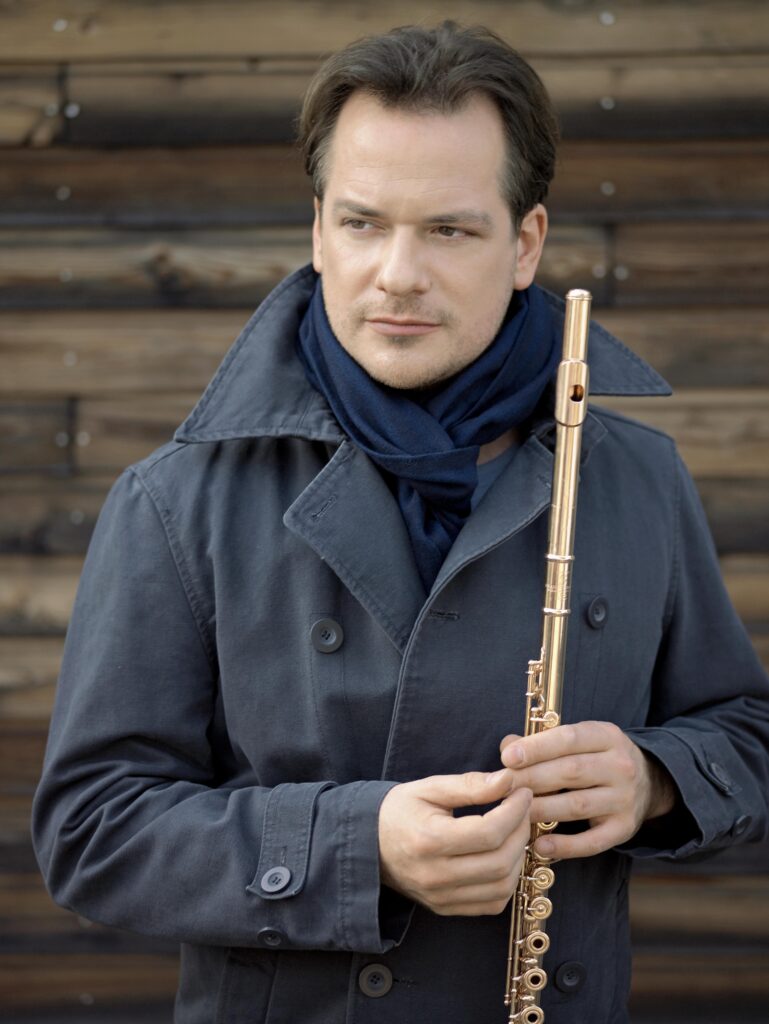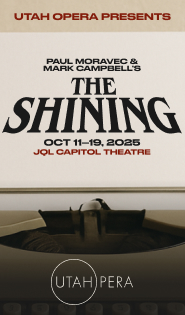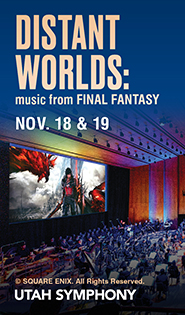Tüür premiere achieves liftoff in Utah Symphony’s Northern program

Fresh on the heels of conducting a sublime performance of Bruckner’s monumental Symphony No. 5, music director Thierry Fischer returned to the Utah Symphony to conduct another seminal fifth symphony, this one by Sibelius. The program also included Sibelius’s Finlandia and the U.S. premiere of Estonian composer Erkki-Sven Tüür’s Lux Stellarum. The composer’s flute concerto featured the Utah Symphony artist-in-association Emmanuel Pahud.
While the Sibelius is not as monumental in length as the Bruckner—30 minutes to the latter’s 76—it played to the conductor’s strengths in a similar way, with Fischer carefully crafting each phrase, cut-off and textural flourish to create a stunning musical structure. However, it was the unique sonic world created by the Tüür that made the biggest splash.
Tüür wrote Lux Stellarum (“Light of the Stars”) specifically for Pahud, who played the world premiere last May with the Berlin Philharmonic, where he serves as principal flutist. Watching Pahud’s organic and charismatic performance Friday night, it was easy to see him as Tüür’s muse. However, the piece does more than showcase the soloist’s technical prowess and musicality; it also pushes the sonic boundaries of the flute and the orchestra, creating an engaging, mind-expanding experience for the listener.
“Fading Stardust,” the first of four contiguous movements, begins with twittering flurries in the flute punctuated by runs in the xylophone and harp. Muted trumpets and flutes playing harmonics enter, and an otherworldly orchestral backdrop slowly develops. While most concerti set up a friendly competition between orchestra and soloist, Tüür’s orchestra serves as the flute’s home base. After a series of cascading melodic figures that explore the limits of the instrument’s range and tone, the flute returns to rest on a bed of warm, ethereal strings and winds.
The other movements have similarly astronomical names—“Dancing Asteroids,” “Litany of the Dying Stars,” and “Floating Galaxies”—but Lux Stellarum is more than a programmatic piece about the night sky. In his notes, Tüür said the piece is about “the inability of man to actually grasp the scope of the universe,” and it achieves this by having the soloist wander through exotic orchestral colors and unexpected melodic and rhythmic turns. The percussion section plays a central role in the drama, with the timpanists and three percussionists staying busy throughout the piece playing instruments that include blocks, gongs, xylophones, bells, rain sticks, and hand-held wind chimes.
Pahud displayed a wide variety of tones from sweetly melodic, to aggressive and percussive; the extended techniques he employed included whispers and popping sounds made by the soloist’s lips on the mouthpiece. The solo flute was particularly intriguing when interacting melodically with the other flutes in the orchestra, which, except for the occasional use of harmonics, used more of a traditional technique.
The mood of the piece ranges from cold and abstract to contemplative and dreamy to aggressive and terrifying. Fischer’s attention to articulation, phrasing, and tempi accentuated the emotional sweep. While its tonality and harmonic language was in the abstract modernist tradition, Lux Stellarum remained engaging throughout its 25 minutes, prompting a raucous standing ovation and five curtain calls from the appreciative audience.
While Sibelius’s traditionalism and lyrical style branded him as an anti-modernist during his lifetime, the two pieces on Friday’s program did not seem at all out of place bookending the Tüür. Written two decades apart, Finlandia and the Fifth Symphony displayed the composer’s essential qualities and his growth as an artist over his career.
Fischer’s interpretation of each showed his affinity for the composer’s work and his ability to achieve a glorious, full sound from the orchestra, particularly in the strings. In Finlandia, he leaned into the piece’s stately, hymn-like quality, accentuating the bass line and the string descant while carefully phrasing the inner voices in the winds and brass.
The Fifth Symphony was marked by a sense of unfettered joy, which Fischer carefully built with conscientious phrasing and a sense of balance between each section of the orchestra.
The beauty, dynamic sweep, and tonal variety in the strings was stunning in the pastoral first movement, which opens with a musical sunrise. In a span of a few measures, the strings switched from ostinatos buzzing with anticipation to a passionate, legato melodic statement to a shimmering but breathtakingly quiet descant over a bassoon melody.
With the entire orchestra, Fischer displayed a keen sensitivity to the piece’s subtle shifts in mood, particularly when the stately second movement gives way, without a pause, to the building triumph of the third movement, breaking into a gallop. He was perhaps at his best when the galloping rhythm was overtaken by the shamelessly lyrical “swan song” melody in the horns that ends the piece. Fischer carefully phrased the final passage, allowing the raw power of the brass to bring it home without undue sentiment.
The program will be repeated 5:30 p.m. Saturday at Abravanel Hall. utahsymphony.org

